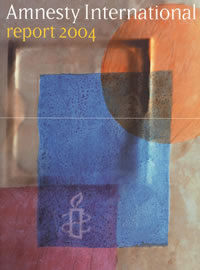|
|
 |
For several months now, VanRamblings has been writing about the imminent release of Windows XP Service Pack 2 (Window Media Player required). Now, we can report officially — thanks to a tip from Michael — that Microsoft has confirmed Windows XP SP2 will arrive in August. Arguably, Microsoft’s biggest service pack yet, and the company’s most important security project since the Trustworthy Computing initiative, there are those who feel SP 2 will cause chaos in the computing world.
Scot Finnie explores the positives and pitfalls associated with XP 2.
All things said, Windows XP Service Pack 2 is a mandatory download, and as such it is important that you know as much about SP 2 as possible in order that you might avoid, as far as one can plan for these things, problems related to its release. With this in mind, have a look at the next item, and the accompanying article by Fred Langa. VanRamblings particularly appreciates the pop-up graphics that accompany the article below, which provide visual insight into the new Windows Update facility.
The Promise — And Problems — Of The New Windows Update
 |
A new version of Windows Update is about to début. It first appeared as part of the beta pre-release versions of Windows Service Pack 2 for XP. The new Update process (comprising both the new Windows Update site and a new software applet, titled Windows Security Center) has different defaults and behaves differently from the Update you’re probably used to.
Next month, the final form of this software will be offered to you as a normal Windows Update for XP and Windows 2000. You might want to take a look at the preview, in Fred Langa’s expansive Information Week article, for the full story. Not only does Fred provide the information you’ll need to adjust to the new Windows Update facility, he provides graphical pop-up screens, which take you through the new update process.
Test Your Popup Blocker
Auditmypc.com has released a page that will hammer your browser with every conceivable method of popup window and rate your popup-blocking software. On VanRamblings’ PC, Internet Explorer’s Google Toolbar received a Very Good rating with a score of 85, while the default popup settings in VanRamblings’ Mozilla received an Almost Perfect! rating with a score of 95. This is a good tool if you want to test the efficacy of your blocker, or gain insight into the methods used by popup companies.
In Tech News This Week
Associated Press writer Sam Cage reports that the United Nations is aiming to bring the modern day epidemic of junk mail (spam) to an end. Spam and anti-spam protection cost computer users some $25 billion last year, according to the UN, so they’re organizing a global anti-spam campaign.
Despite privacy concerns, school authorities in the Japanese city of Osaka have decided the benefits outweigh the disadvantages and will now be chipping children in one primary school, which is to say, that they’ll be attaching RFID chips to kids’ schoolbags, name tags or clothing in one Wakayama prefecture school. Denmark’s Legoland introduced a similar scheme last month to stop young children going astray.
Question of the Week
|
|
I had to reformat my hard drive, and I cannot find a code for Microsoft Word 2000. I have documentation for only Dell software and Windows XP. The Windows XP product key was located on a tag on the bottom of my Dell, but it doesn’t work for MS Word 2000. What do I do in order to install my Word 2000? Any help would be greatly appreciated. — Submitted by: Bob Whitecrow, Estevan, Saskatchewan
|
|
Software keys are much like keys to a car: a car key will work in only one particular car, so it can’t be shared. The same can be said for a software key. Dell should supply them with a phone call, but also beware that you can’t install Dell’s Office 2000 software on a machine other than what Dell sold you. Supplied Dell software is proprietary.
For most computer users a good rule of thumb would be: when you first receive your PC and all of the attendant software, take a wide-tip permanent marking pen, and write the product key for each piece of software you’ve had installed, right onto the software programme CD. Once this task has been completed, take extra special care to store all of the CDs you received with your PC in a secure location, preferably in one of those pocket CD organizers, available at most retail computer stores.
You know the old saying, “an ounce of prevention, is worth a … ”



